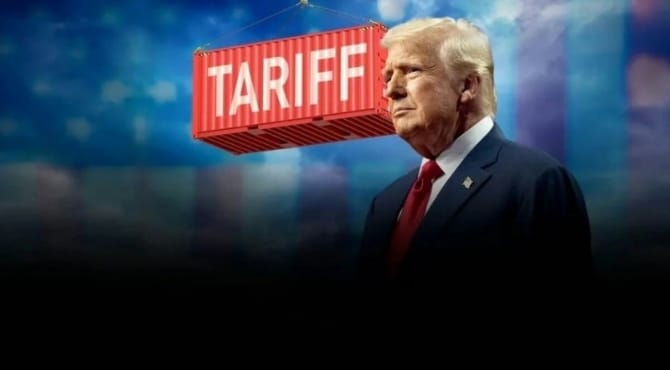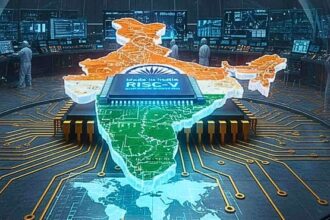The Reserve Bank of India’s (RBI) latest State of the Economy bulletin reflects resilience. It clearly states that high US tariffs “do not pose a major concern for overall growth.”
The reasoning is simple — India’s economy is largely domestic-driven, with strong consumption and investment trends acting as buffers against external shocks. In other words, while exports matter, they are not the sole engine of India’s growth story.
RBI Governor Sanjay Malhotra reinforced this point at the IMF meeting, noting that India’s fundamentals remain strong despite global headwinds. Inflation has come down sharply, fiscal deficit is under control, and the rupee has shown remarkable stability compared to other emerging market currencies. These factors collectively strengthen India’s position in an uncertain global environment.
When the United States imposed steep tariffs on Indian exports in August, many expected a major dent in India’s trade numbers. Economists predicted a slowdown in exports and a possible drag on growth. But when the September data came out, the story was surprisingly different — exports actually rose by 6.7%. Instead of panic, India responded with purpose. The country began exploring new markets in Australia, Europe, and Africa effectively turning a potential setback into an opportunity for diversification.
First, it’s important to say why the tariff didn’t slam the brakes on growth. RBI’s note and recent numbers show India is largely driven by domestic demand. So even though tariffs can bite portions of trade, the overall economy wasn’t fully exposed. Add to that: roughly 45% of shipments to the US were already exempt (things like smartphones and many pharma products), so a big chunk of exports wasn’t hit directly.
Second, India moved fast on market diversification. Exporters are actively shifting focus to Australia, Europe and African markets. That’s not just talk — trade missions, deals, and pushed supply-chain links are beginning to fill in gaps. When one lane gets blocked, finding new routes matters, and that’s exactly what’s happening. In many cases, buyers outside the US are picking up orders that might have been affected, which helps neutralize the tariff’s net impact.
Third, domestic reforms matter. GST 2.0, easier compliance, and measures supporting MSMEs and startups have reduced frictions in the system. These structural moves make Indian goods and services more competitive and help exporters respond faster. RBI’s mention of strong corporate balance sheets, surplus liquidity, and resilient services exports and remittances shows the economy had buffers to absorb shocks.
On political messaging: slogans like “Make in India” and “Vocal for Local” get a lot of airtime. Have they worked? In part, yes. They pushed policy focus toward manufacturing, supply chains, and local capability. But slogans alone don’t create instant export wins — the real work is in improving logistics, quality, and market access. The recent policy moves and trade outreach show that the government has been trying to turn those slogans into action.
That said, this isn’t a blanket win. Some sectors feel more pressure than others, and global uncertainty — fiscal stress in advanced economies, geopolitics — still hangs over the outlook. So while the tariff’s immediate impact looks manageable, we shouldn’t get complacent.
The September data serves as proof that India is learning to adapt quickly. Instead of being overly dependent on the US market, exporters have started to diversify trade routes and strengthen ties with new regions. Markets in Africa and Australia are particularly promising, offering both demand and long-term partnerships. This diversification strategy means that any loss from US tariffs can be offset — or even overcompensated — by gains elsewhere.
The government’s continued push for reforms such as GST 2.0, which simplifies tax structures and reduces compliance burden, further supports business confidence. These policy moves align with Prime Minister Narendra Modi’s vision of making India a global manufacturing and export hub. Modi has often said, “Reform, Perform, and Transform”, and in this case, the government’s quick action shows that the slogan is finding ground in reality.
In the end, the fear surrounding US tariffs seems to have been overstated. The impact, while real in certain sectors, is far from catastrophic. India’s adaptability — shifting its export focus and reinforcing domestic growth drivers — has helped neutralize the tariff shock. The 6.7% rise in exports in September is not just a statistic; it’s a statement that India is no longer a passive player in global trade.
As the RBI and government both emphasize, India’s growth story is powered more by its internal demand, reform momentum, and structural resilience than by external approvals. So, while tariffs might sting in the short run, they have also spurred India to widen its horizons and strengthen its economic foundation. In short, what was once seen as a threat has become another milestone in India’s journey toward becoming a truly self-reliant and globally competitive economy.









